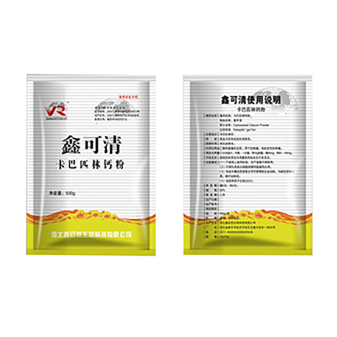- Afrikaans
- Albanian
- Amharic
- Arabic
- Armenian
- Azerbaijani
- Basque
- Belarusian
- Bengali
- Bosnian
- Bulgarian
- Catalan
- Cebuano
- Corsican
- Croatian
- Czech
- Danish
- Dutch
- English
- Esperanto
- Estonian
- Finnish
- French
- Frisian
- Galician
- Georgian
- German
- Greek
- Gujarati
- Haitian Creole
- hausa
- hawaiian
- Hebrew
- Hindi
- Miao
- Hungarian
- Icelandic
- igbo
- Indonesian
- irish
- Italian
- Japanese
- Javanese
- Kannada
- kazakh
- Khmer
- Rwandese
- Korean
- Kurdish
- Kyrgyz
- Lao
- Latin
- Latvian
- Lithuanian
- Luxembourgish
- Macedonian
- Malgashi
- Malay
- Malayalam
- Maltese
- Maori
- Marathi
- Mongolian
- Myanmar
- Nepali
- Norwegian
- Norwegian
- Occitan
- Pashto
- Persian
- Polish
- Portuguese
- Punjabi
- Romanian
- Russian
- Samoan
- Scottish Gaelic
- Serbian
- Sesotho
- Shona
- Sindhi
- Sinhala
- Slovak
- Slovenian
- Somali
- Spanish
- Sundanese
- Swahili
- Swedish
- Tagalog
- Tajik
- Tamil
- Tatar
- Telugu
- Thai
- Turkish
- Turkmen
- Ukrainian
- Urdu
- Uighur
- Uzbek
- Vietnamese
- Welsh
- Bantu
- Yiddish
- Yoruba
- Zulu
Nën . 23, 2024 22:20 Back to list
what is the difference between ivermectin and avermectin
Understanding the Difference Between Ivermectin and Avermectin
Ivermectin and avermectin are both important compounds that belong to the class of drugs known as macrocyclic lactones. These compounds are derived from a natural source, specifically from a soil bacterium called *Streptomyces avermitilis*. While they share a common origin and exhibit similar biological activities, there are notable differences between them that are worth exploring. This article discusses the origins, mechanisms of action, uses, and distinctions between ivermectin and avermectin.
Origins
Both ivermectin and avermectin originate from the fermentation of the *Streptomyces avermitilis* bacterium. The avermectin molecule was the first to be discovered in the early 1970s, which consists of several components known as avermectins. Ivermectin is a semi-synthetic derivative of avermectin. It was developed in the late 1970s and early 1980s, modified to enhance its effectiveness and safety profile.
Mechanisms of Action
Ivermectin and avermectin work similarly at the molecular level, primarily by binding to specific chloride channels called glutamate-gated chloride channels (GluCl). This mechanism leads to increased permeability of cell membranes to chloride ions, resulting in paralysis and death of parasites. Additionally, both compounds can bind to other ion channels, which contributes to their antiparasitic effects.
Despite their similarities, ivermectin has been shown to be more potent against a broader range of parasites when compared to the parent avermectins. The modifications made during the synthesis of ivermectin enhance its affinity for these channels and thus its efficacy in treating various parasitic infections.
Uses in Medicine
Ivermectin is widely recognized for its antiparasitic properties and is commonly used to treat a variety of conditions. It is particularly prominent in the treatment of onchocerciasis (river blindness) and lymphatic filariasis. Additionally, ivermectin has been utilized for managing conditions like strongyloidiasis, scabies, and lice infestations.
what is the difference between ivermectin and avermectin

Avermectin, in contrast, is less frequently referenced in clinical uses relative to ivermectin. Both ivermectin and avermectin have been primarily used in veterinary medicine. Avermectins are often used in livestock, pets, and agricultural applications for controlling parasitic infections.
Pharmacokinetics and Administration
Another important aspect of the difference between ivermectin and avermectin lies in their pharmacokinetics—how the body absorbs, distributes, metabolizes, and excretes the drugs. Ivermectin is known for its favorable pharmacokinetic profile, generally requiring a lower dosage compared to avermectins to achieve effective therapeutic concentration. This results in a single dose often being sufficient for many treatments, making ivermectin not only more convenient but also advantageous in terms of patient compliance.
Side Effects and Safety Profile
Both ivermectin and avermectin pose certain risks and potential side effects, particularly if not used as directed. Common adverse effects include mild gastrointestinal disturbances, dizziness, and skin reactions. Ivermectin, however, tends to have a better safety profile and tolerability in humans when compared to its parent avermectin. This is largely due to the modifications made to its chemical structure, which have been designed to minimize toxicity while maintaining effectiveness against parasites.
Conclusion
In summary, while ivermectin and avermectin share a common origin and demonstrate similar mechanisms of action, they diverge significantly in terms of efficacy, safety, and clinical applications. Ivermectin has become a cornerstone in the treatment of a plethora of parasitic infections in humans, while avermectin maintains a more significant role in veterinary medicine. Understanding these differences is crucial for healthcare professionals and researchers working in fields related to parasitology, pharmacology, and public health, as it facilitates more informed decision-making regarding treatment protocols and drug development.
The ongoing research into the applications and properties of both ivermectin and avermectin continue to open doors for new therapeutic options, underscoring the importance of these compounds in the fight against parasitic diseases.
-
Guide to Oxytetracycline Injection
NewsMar.27,2025
-
Guide to Colistin Sulphate
NewsMar.27,2025
-
Gentamicin Sulfate: Uses, Price, And Key Information
NewsMar.27,2025
-
Enrofloxacin Injection: Uses, Price, And Supplier Information
NewsMar.27,2025
-
Dexamethasone Sodium Phosphate Injection: Uses, Price, And Key Information
NewsMar.27,2025
-
Albendazole Tablet: Uses, Dosage, Cost, And Key Information
NewsMar.27,2025













